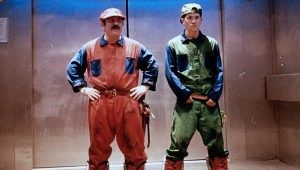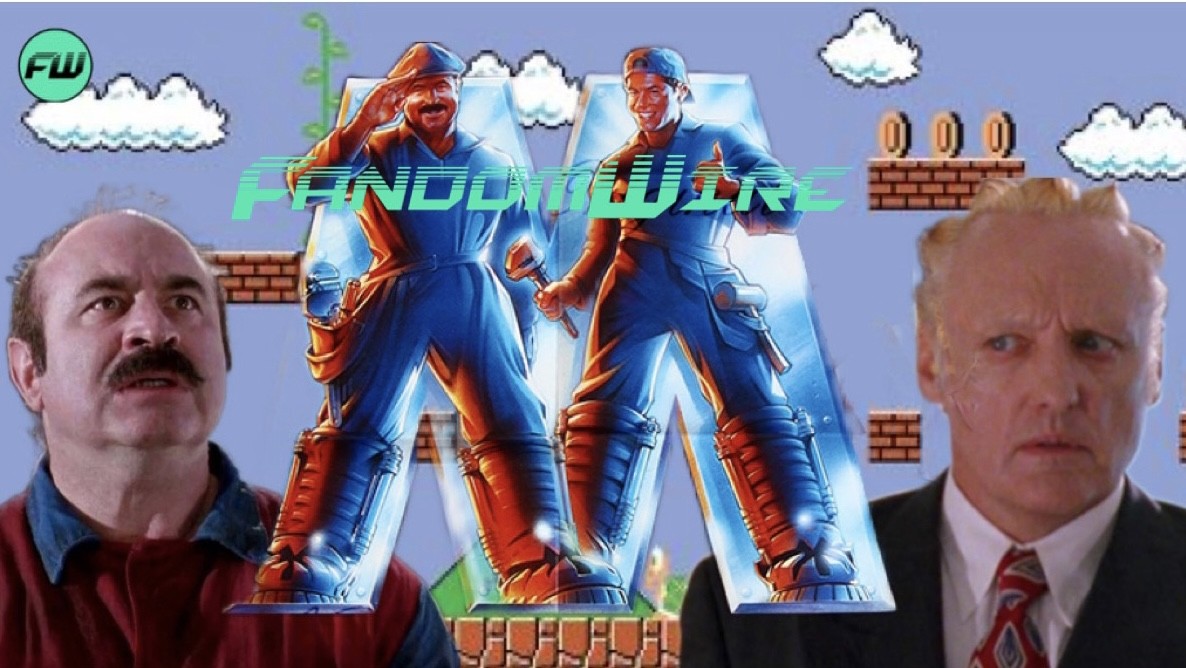It’s not controversial to say that 1993’s Super Mario Bros. is a bad movie. In fact, almost everyone who’s seen it would agree with that. The film bombed at the box office, was reviled by critics, and has been a go-to punching bag for online film commentators since the dawn of Internet film commentators. It started the infamous “video game movie curse” that has only recently been lifted by the likes of The Last of Us, Arcane, and the Sonic movies; and scared
new Mario movie just weeks away from hitting theaters, can anything of value be gleaned from
revisiting the original adaptation thirty years later? Shockingly, yes.
masterpiece. The film is overly convoluted, filled with unfunny jokes, every actor seems to think
they’re in a different movie, and it’s so divorced from its source material in tone and design that
Yoshi being a photorealistic baby velociraptor is one of the more accurate elements. But the
reasoning behind its badness makes the film deeply fascinating, as its particular brand of badness
is increasingly rare in the modern era. See, when modern blockbuster movies are bad, they tend
to be bad for easily traceable and predictable reasons like studio interference, overemphasizing
franchise management, and so on. But this is not the case with Mario. Rather, directors Rocky
Morton and Annabel Jankel were given carte blanche to do whatever they wanted with the
beloved property and their direction is nothing if not unique.
Also Read: Super Mario Bros. Movie Details Revealed

killed the dinosaurs didn’t actually kill them, but instead sent them to a parallel universe where
they evolved into human/lizard hybrids living in a dystopian New York called “Dinohattan,”
ruled over by Dennis Hopper’s tyrannical King Koopa. Now, taken on its own, “What if the
dinosaurs lived?” is a solid hook for a sci-fi film. Even the idea of them evolving parallel to humans is sound on the surface. And for all the jokes made over the years about the Goombas’
work for Dinohattan are genuinely well done, creating a grimy, lived-in, and dangerous
atmosphere that suits the dystopian concept. However, once you start getting into the weeds, it
all starts to fall apart.
to turn disloyal citizens into Goombas and that he wants to use to turn humanity into monkeys as
vengeance against them for hoarding all the resources in their dimension, even though no one
from the human realm even knew Dinohattan existed until Mario and Luigi showed up. To do
this, he needs to obtain the meteorite piece that Princess Daisy (Not Peach) wears around her
neck and reunite it with the remains of the meteorite that sent them to the other dimension
because that will allow them to break the physical barrier between universes. However, Daisy is
living in the human world and thus Koopa sends his minions into that dimension to kidnap her as
one of the film’s rare adherences to the game’s plot. Why can’t Koopa just go himself? Because
he was sealed off from that dimension until Mario’s rival Scapelli started messing around with
the ruins of the meteorite on the human side because the meteorite physically exists in both
dimensions simultaneously. This is the film’s actual explanation for a gaping plot hole and not
only does it avoid answering the question, it actually ends up raising further ones.

like they gel with the core themes and sensibilities of the Mario games, even back then. In 1993,
the main Mario series consisted entirely of the NES trilogy and Mario World and while those
games had very little plot; they did have a distinct aesthetic and tone. They were lively, vibrant,
fantasy adventures with a nominal fish-out-of-water hook thanks to the backstory of Mario and Luigi being Brooklyn plumbers seen in the instruction manuals and the tie-in animated series.
makes the narrative not only disconnected from its inspirations, but also inherently less
interesting. Instead of going from a thralling urban city to a fantastical world filled with unique
flora and fauna, Mario and Luigi go from a thralling urban city to a slightly dirtier thralling urban
city that occasionally has weird lizard men and a bunch of slimy fungus everywhere so they can
still technically call it the Mushroom Kingdom.
thing he ever did” and its directors as “a husband-and-wife team whose arrogance had been
mistaken for talent,” and it’s hard to disagree with him. While the dystopian aesthetics and
parallel universe conceit could be compelling if fleshed out more, trying to graft them onto the
pre-existing fantasy narrative of the Mario games just doesn’t work and to assume that your ideas
must take precedence over such beloved source material is textbook arrogance in my opinion. In
that case, I suppose the lesson to be learned from 1993’s Super Mario Bros. is to stay humble.
Remember what got you here, what made the material work in the first place, and do your best to
honor that material. Bring your own vision to it, yes, but make sure that vision is cohesive with
the subject matter. And if it isn’t cohesive, ask yourself why and move forward accordingly.
Because if you don’t, your movie may end up the subject of a decades-later snarky Internet
analysis instead of the revered classic you want it to be.


